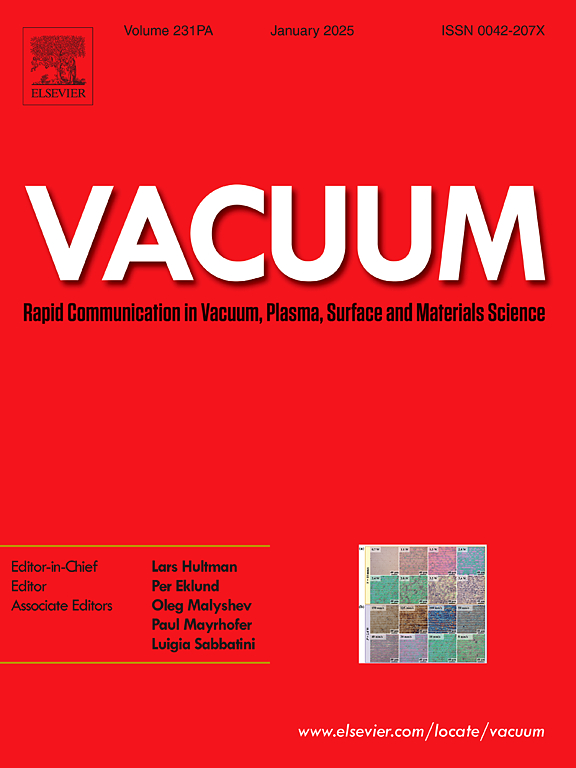方形外壳中离散加热对银、铜和MWCNT纳米流体热性能的影响:CFD分析
IF 3.9
2区 材料科学
Q2 MATERIALS SCIENCE, MULTIDISCIPLINARY
引用次数: 0
摘要
本研究探讨了在纳米流体填充的外壳中,瑞利数(103-106)、纳米颗粒浓度(0.1 vol%-0,5 vol%)和加热位置之间的复杂相互作用,以提高传热效率并最大限度地减少不可逆。以含银(Ag)、铜(Cu)和多壁碳纳米管(MWCNTs)的水基纳米流体为研究对象,建立了一个经过验证的数值模型,分析了这些变量对传热特性和熵生成的影响。结果表明,随着瑞利数的增加,特别是在较高的纳米颗粒浓度下,传热从传导转变为对流为主。在Ld = 0.4和0.5 vol% Ag纳米流体条件下进行离散加热,确定了浮力驱动循环和努塞尔数的最佳条件,从而提高了传热性能,减少了能量损失。研究结果有助于设计先进的被动冷却系统,提高高性能热应用的效率和寿命。本文章由计算机程序翻译,如有差异,请以英文原文为准。
Impact of discrete heating on thermal performance of Ag, Cu, and MWCNT nanofluids in square enclosure: A CFD analysis
This study investigates the complex interactions between Rayleigh number (103-106), nanoparticle concentration (0.1 vol%-0,5 vol%), and heating location in nanofluid-filled enclosures to enhance heat transfer efficiency and minimize irreversibilities. Focusing on water-based nanofluids containing silver (Ag), copper (Cu), and multi-walled carbon nanotubes (MWCNTs), a validated numerical model analyzes the impact of these variables on heat transfer characteristics and entropy generation. Results reveal a shift from conduction to convection-dominated heat transfer with increasing Rayleigh numbers, particularly at higher nanoparticle concentrations. Optimal conditions for buoyancy-driven circulation and Nusselt number are identified with discrete heating at Ld = 0.4 and 0.5 vol% Ag nanofluid, leading to improved heat transfer performance and reduced energy losses. The findings contribute to the design of advanced passive cooling systems, enhancing the efficiency and longevity of high-performance thermal applications.
求助全文
通过发布文献求助,成功后即可免费获取论文全文。
去求助
来源期刊

Vacuum
工程技术-材料科学:综合
CiteScore
6.80
自引率
17.50%
发文量
0
审稿时长
34 days
期刊介绍:
Vacuum is an international rapid publications journal with a focus on short communication. All papers are peer-reviewed, with the review process for short communication geared towards very fast turnaround times. The journal also published full research papers, thematic issues and selected papers from leading conferences.
A report in Vacuum should represent a major advance in an area that involves a controlled environment at pressures of one atmosphere or below.
The scope of the journal includes:
1. Vacuum; original developments in vacuum pumping and instrumentation, vacuum measurement, vacuum gas dynamics, gas-surface interactions, surface treatment for UHV applications and low outgassing, vacuum melting, sintering, and vacuum metrology. Technology and solutions for large-scale facilities (e.g., particle accelerators and fusion devices). New instrumentation ( e.g., detectors and electron microscopes).
2. Plasma science; advances in PVD, CVD, plasma-assisted CVD, ion sources, deposition processes and analysis.
3. Surface science; surface engineering, surface chemistry, surface analysis, crystal growth, ion-surface interactions and etching, nanometer-scale processing, surface modification.
4. Materials science; novel functional or structural materials. Metals, ceramics, and polymers. Experiments, simulations, and modelling for understanding structure-property relationships. Thin films and coatings. Nanostructures and ion implantation.
 求助内容:
求助内容: 应助结果提醒方式:
应助结果提醒方式:


